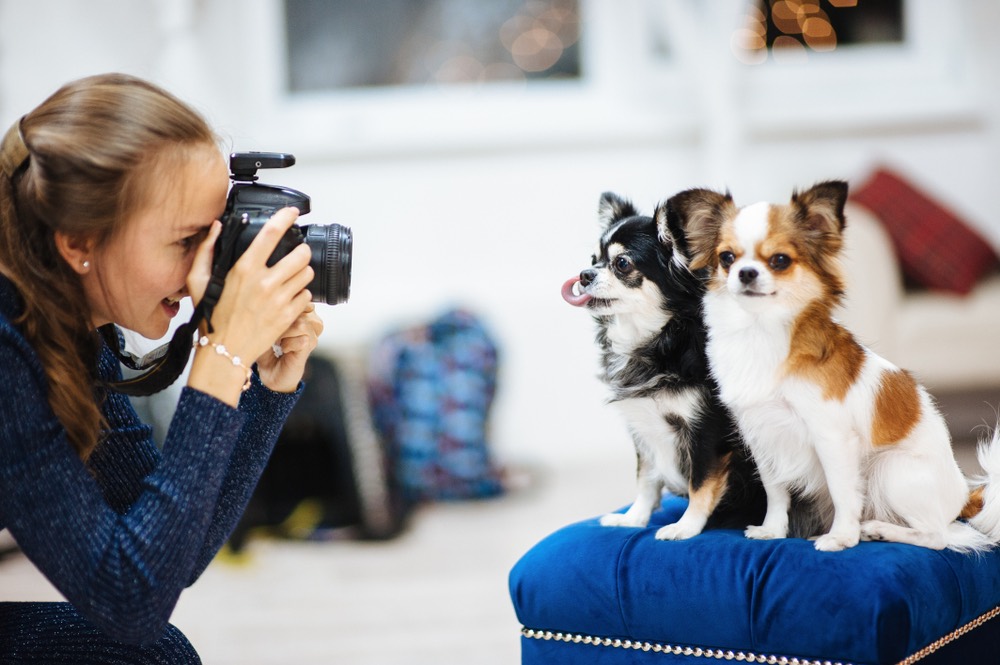Enjoy Great Pet Photography
Our pets are an integral part of our lives. They bring us joy, companionship, and unconditional love. We strive as pet owners to capture the essence of our pets and create lasting memories with photography. Photography pets can be a rewarding and challenging experience. It requires patience, creativity, and technical skills.
This comprehensive guide for pet photography will help you learn how to take great pet portraits by introducing you to the essential tips and techniques of cat and dog photography.
These tips and guidelines for pet photography will help you take beautiful and heartwarming pictures of your furry friends, whether you are a professional photographer, a hobbyist who takes photos of their pets, or a beginner looking to learn about a new type of photography.
Gear for Pet Photography
The quality of the images you produce can be greatly improved by using the correct equipment and gear when learning to photograph pets. Although basic equipment can produce great results, some gear can enhance the experience of pet photography. Here are some recommendations:
Camera
Invest in DSLR cameras with manual settings. This will allow you to control shutter speed, exposure, and focus. Digital cameras and DSLR cameras are popular with pet photographers because they can capture quick-paced moments.
Consider cameras that have continuous shooting mode or burst modes. These features allow you to take a series of photos with a single press of the shutter. This is perfect for taking action shots.
You can take great photos with a point-and-shoot camera, but you will have less control over the settings and focal length.
Lens
It is important to have a versatile telephoto for different shots. Zoom lenses with a range of 24-70mm are ideal for wide-angle shots and portraits.
Consider adding a fast, prime lens to the kit. You can achieve beautiful bokeh with an aperture of f/1.8 to f/1.4. This is perfect for pet portraits.
If you want to capture action shots or maintain a comfortable distance from your pet, a telephoto or zoom with a long focal length is ideal.
Tripod, reflector, and off-camera flash
A tripod is not always required, but it can be helpful when you are photographing pets that require longer exposures or to ensure the camera is stable for composed shots. When trying to eliminate camera shake, tripods can be essential.
Reflectors can also be used to redirect and manipulate natural light. They help fill in the shadows on your pet’s faces and create a more balanced lighting. A flash can be used to create more light if you are unable to use the natural light or if your photo shoot is in a studio.
Toys and Treats
Remember to bring your pet’s favorite toys and treats. Pet photographers are always willing to reward their clients. These can be great tools to keep your pet engaged and captivated during the photoshoot.
Create a comfortable environment for your pets.
It is important to make sure that your pet feels at ease and comfortable before you embark on a photo shoot.
Be familiar with your pet’s behavior, and create a secure and safe environment for the shoot. Select a place where your pet is comfortable, either inside your home or outdoors.
Remove all distractions or hazards that could cause your pet to feel anxious or uncomfortable. A calm and welcoming atmosphere will help you take more candid and natural photos.
Patience, timing, and patience
Pet photography requires patience and an acute sense of timing. Animals are unpredictable, so you need to be ready to capture their expressions and poses at any time.
Be sure to observe your pet closely and anticipate its actions. Then, be patient, waiting for the perfect moment to capture that perfect shot. Be ready to capture moments spontaneously that show your pet’s personality. Keep your camera close at hand.
You will be rewarded for your patience with images that capture the essence of your animal.
Lighting
Pet photography does not require special lighting. Natural light provides soft, flattering lighting that highlights your pet’s best features.
Position your pets near a large, well-lit window when shooting inside. The golden hour (early morning and late afternoon) is ideal for outdoor dog photography. This is because the sun creates the perfect lighting conditions to create a warm, enchanting atmosphere.
Setting up your camera to photograph pets
Understanding the camera settings can be incredibly useful when trying to capture pet portraits or action shots. Here are some helpful tips.
Shutter Speed
It can be difficult to freeze the motion of a pet, such as a cat or dog. For sharp and focused photos, you can adjust the shutter speed of your digital camera to a higher setting. You may have to change your ISO or aperture to compensate for a faster shutter speed.
Aperture
The aperture modifies the depth of field, which determines how much of a scene is in focus. Choose a large aperture for a shallow depth of field. This technique isolates your pet’s face from the background and draws attention to it. Blurred backgrounds add an artistic touch and improve the visual impact of your photos.
